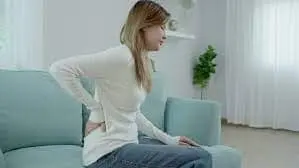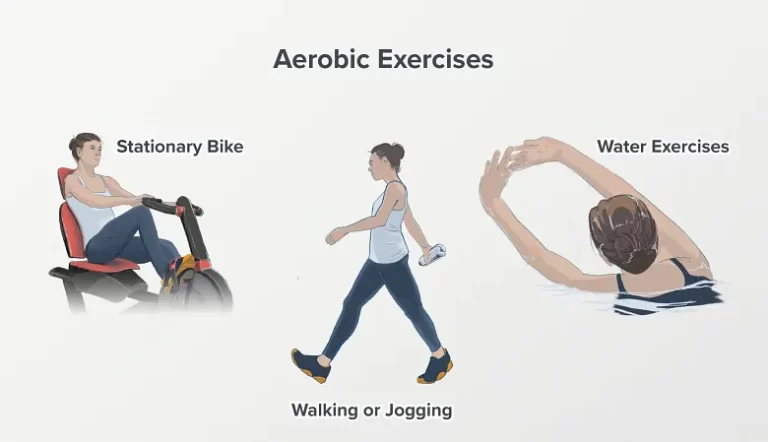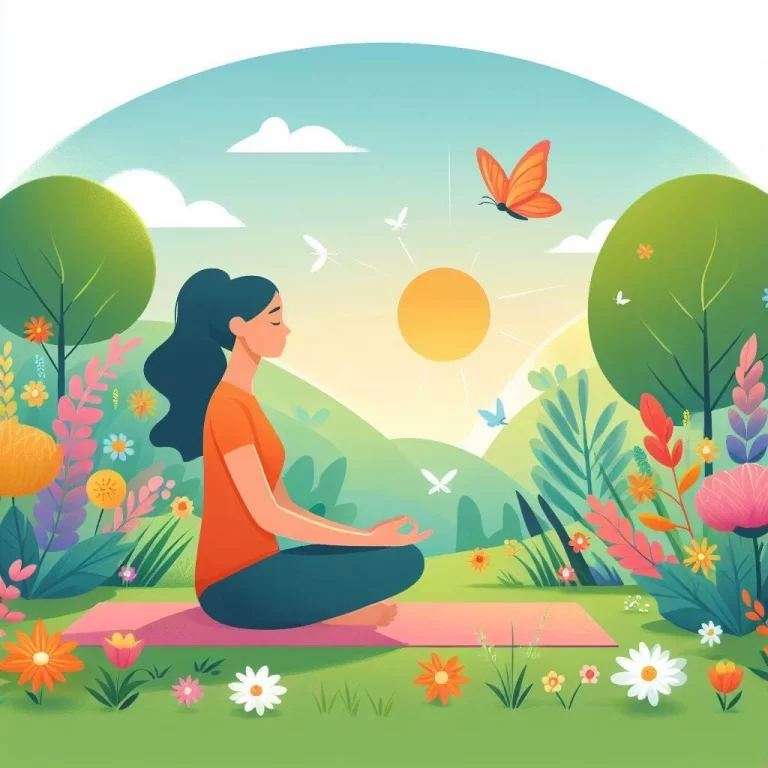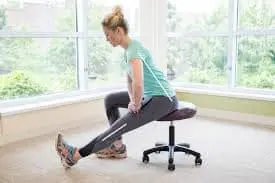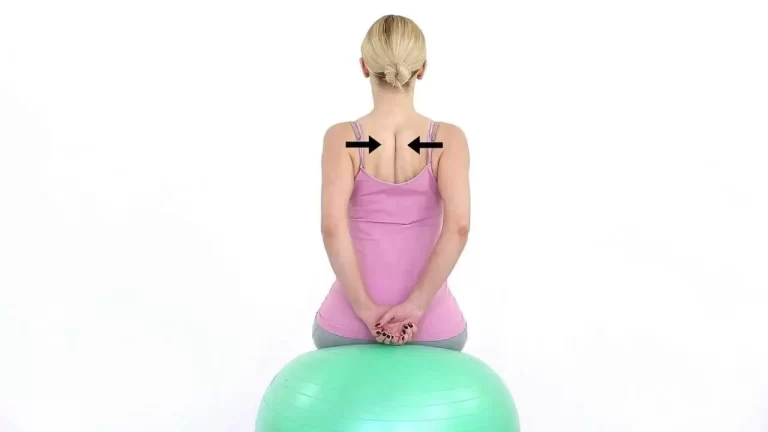Lower Back Pain when Sitting: Cause, Treatment, Exercise
Introduction:
Lower back pain when sitting is a common and frequently painful condition that affects people of all ages and lifestyles. It has a significant impact on everything from daily activities to work productivity and can be caused by a variety of factors. Since this pain can range in intensity and be both temporary and persistent, it’s critical to understand the causes, signs, and potential treatments.
We will explore the topic of lower back pain while sitting for a while in this article, including potential causes, symptoms, and management and relief techniques. This information will be helpful whether you are someone who occasionally feels uncomfortable or someone who wants to prevent or manage persistent lower back pain.
Causes of Pain in the Lower Back During Sitting:
Many things can lead to lower back pain during prolonged sitting, and to effectively treat and prevent the condition, it is crucial to identify the underlying reasons.
The following are some typical reasons why sitting causes lower back pain;
- Being overweight
Extra weight bearing while seated can put a strain on the lower back, particularly if the abdominal muscles are weak. This could cause pain.
- Pelvic Problems
When there are problems in the pelvic area, including pelvic inflammatory disease or dysfunction of the sacroiliac joint, sitting becomes uncomfortable.
- Ineffective Ergonomics
The body might be forced into unusual positions and the lower back can be strained by poorly designed workstations or seats. It’s essential to practice good ergonomics when sitting to avoid back pain.
- Herniated disk
A disc in the spine that has burst and is pressing on a spinal nerve is known as a herniated disk. Any spinal disk could be affected. Medication and physical therapy are frequently used when combined with dealing with the illness.
- Poor Posture
One of the most common reasons for lower back pain when seated is bad posture. Bending over, hunching over a desk, or sitting with an excessively curved lower back can all cause pressure on the muscles, ligaments, and discs in the lumbar region.
- Imbalanced Muscles
Pain in the lower back can be caused by weakness or imbalances in the muscles of the lower back, abdomen, and pelvis. Weak or strained muscles might put an uneven amount of strain on the spine when you’re sitting.
The sciatic nerve, which runs from the lower back into the legs, can become inflamed or compressed, leading to the illness known as sciatica. Sciatica symptoms can aggravate sitting, leading to lower back and leg pain.
- Spinal Disorders
Herniated discs, degenerative disc disease, spinal stenosis, and spondylolisthesis are a few examples of underlying spinal problems that may cause lower back pain when sitting. This type of situation could cause structural issues or aggravate existing nerves.
- Injury
An individual may sprain or strain their lower back when lifting something improperly. Alternatively, the injury can have been caused by trauma received during a car accident or while engaging in sports.
Treatment for Pain in the Lower Back During Sitting:
Numerous treatment options for lower back pain happen when sitting, depending on the underlying cause, specific factors, and severity of the pain.
The following therapeutic modalities are useful in controlling and reducing lower back pain during sitting;
- Relaxation and Changing Your Activities
Initial treatment measures include resting and avoiding activities that aggravate the pain. Avoid prolonged sitting and return to light movement gradually to prevent stiffness.
- Treatment with Physical Therapy
A physical therapist may build an exercise program to help with muscle imbalances, improve flexibility, and build stronger core muscles. In addition, techniques including manual treatment, heat or cold therapy, and massage may be applied.
- Medications
Pain and inflammation can be reduced with the use of non-steroidal anti-inflammatory medications (NSAIDs). If there are underlying illnesses or more severe pain, prescription medication may be recommended.
- Postural Training
Practice a good sitting position to help release tension in your lower back. Use pillows or lumbar supports wherever necessary. Think about wearable technology that offers feedback or devices that train your posture.
- Exercise and Yoga
You may increase your flexibility and release muscle tension by practicing yoga and exercising regularly.
- Therapy with Heat and Cold
To lessen swelling and pain in the lower back, apply heat or cold compresses. To find out which is most effective for you, try both.
- Bracing
A medical expert may recommend a support belt or back brace to provide extra stability and support in certain situations.
You must consult a physician to receive an accurate diagnosis and a personalized treatment plan suitable for your particular medical condition and requirements. Remember that the best approach to treating lower back pain during sitting may involve a combination of therapies, including lifestyle modifications, exercise, and pain management methods.
Exercise for Lower Back Pain when Sitting:
Exercise is a good way to prevent and lessen lower back pain put on by extended sitting. Increasing flexibility and strengthening the muscles that support your lower back will help you feel less uncomfortable and sit more upright.
Here are some effective exercises specifically to reduce back pain when sitting;
Pelvic tilts
- With your feet flat on the ground and your knees bent, take a supine position on the floor.
- Spread your arms out in front of your body, palms down.
- Your neck and spine should be in alignment, and the back of your head should be in contact with the mat.
- Maintain the natural curve of your back by giving your lower back some space from the mat.
- It ought to be possible for you to reach your hand into this area.
- Take a breath. Upon exhaling, contract your abdominal muscles to raise your backbone and compress the area between your lower back and the mat or floor.
- This will cause your lower back to gently expand.
- Hold this position for a few seconds.
- Breathe in and let your pelvis and spine return to their starting positions.
- Then relax.
- Five to ten times through, do this exercise.
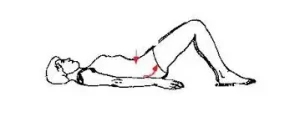
Cat-cow
- Initially, place your hands on the ground in the tabletop position.
- Ensure your back is straight.
- Remain connected by using both hands and feet.
- Lean your head back and fill your belly with air while inhaling deeply.
- Hold this position for a few seconds.
- After that, release the air, raise your chin into your chest, and move to face upward.
- Your lower back is slightly extended.
- Hold this position for a few seconds.
- Then return to your neutral position.
- Then relax.
- Five to ten times through, do this exercise.
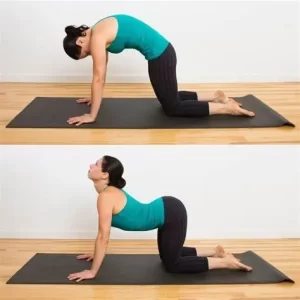
Bridges
- As you lay in bed, position yourself such that you are comfortable.
- Bend your knees after that, keeping your feet flat on the bed.
- Next, tighten your abdominal muscles.
- Lift your head and upper body.
- Maintain your arms at your sides.
- Hold this position for a few seconds.
- Then return to your neutral position.
- Then relax.
- Five to ten times through, do this exercise.
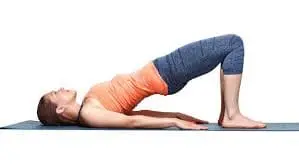
Plank
- Take a prone lying position on the ground.
- Position your forearms straight beneath your shoulders.
- Next, elevate your body off the ground gently while exerting pressure on your forearms and knees.
- Take a comfortable posture with your body.
- About your body, that forms a straight line.
- Keep your posture like this for a few seconds.
- Next, return to your neutral position by taking a step back.
- Then, relax.
- Five to ten times through, do this exercise.
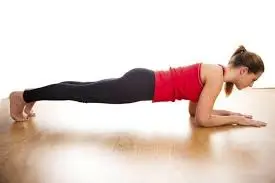
Knee to chest
- To begin, take a comfortable supine position and lie down on the ground.
- One knee should be bent.
- Position your hand slightly below your kneecap or behind your knee.
- Bring your knee up to your chest at this moment.
- Hold this position for a few seconds.
- Then release your leg.
- Then return to your neutral position.
- Next, relax.
- Five to ten times through, do this exercise.
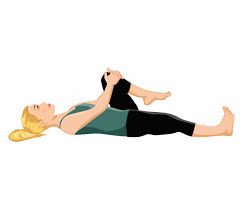
Child’s pose
- Start by kneeling comfortably.
- Maintaining the position of your knees and hips.
- Breathe deeply and bring your body down by bending forward.
- Press your forehead firmly onto the ground.
- Your arms can be raised straight up in front of you.
- Hold this position for a few seconds.
- Then return to your neutral position.
- Then relax.
- Five to ten times through, do this exercise.

Bird dog
- Make sure your body is comfortable by taking a kneeling position to begin.
- Keep your shoulder blades firmly together.
- Next, raise your right arm and left leg toward the ceiling.
- Maintain a parallel hip and shoulder alignment.
- Hold this position for a few seconds.
- Then return to your neutral position.
- Then relax.
- Five to ten times through, do this exercise.
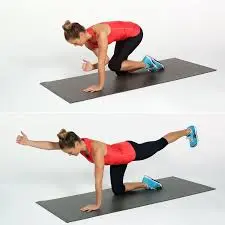
Sphinx pose
- With your hands facing front and palms down, position yourself on your stomach with your elbows beneath your shoulders.
- Step slightly apart with your feet.
- You’re probably going to touch your big toes.
- With your head and chest raised, gently contract your thighs, lower back, and buttocks.
- Breathe deeply and keep your abdomen and lower back strong.
- Your pelvis has to be firmly positioned on the ground.
- You have two options: close your eyes slightly or look directly ahead.
- Hold this position for a few seconds.
- Then return to your neutral position.
- Then relax.
- Five to ten times through, do this exercise.
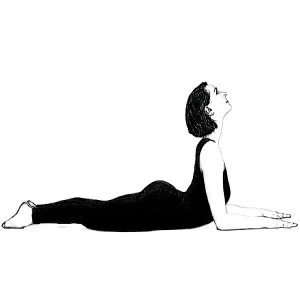
How Can Lower Back Pain Be Prevented While Sitting?
A combination of healthy habits, proper ergonomics, and lifestyle modifications are needed to prevent lower back pain when sitting.
The following practical tips will help you prevent or lessen lower back pain when you sit;
- Keep a Healthy Weight
Sitting could worsen the strain on your lower back if you are overweight. Exercise regularly and a balanced diet are essential for managing your weight. Remember that the best way to avoid pain in the lower back is to stay regular. Take these routines into your everyday life to protect your back and reduce the likelihood of experiencing pain when sitting.
- Stay Active
Regular exercise can help strengthen your core and back muscles. Particularly beneficial are swimming, Pilates, and other water-based exercises. Walking should be a regular part of your routine to keep your muscles toned and your spine in alignment.
- Take Frequently Arranged Breaks
Every thirty to sixty minutes while seated, stand up, stretch, and go for a little walk. It relieves some of the pressure on your lower back. Practice fundamental stretches including forward bending, backward arching, and body rotation during your breaks.
- Make Use of Proper Sitting Methods
With your back straight and your legs and hips bent, take a seat. Lower yourself into the chair by using your leg muscles rather than your waist. Soft seats and couches may not offer sufficient back support, so try to avoid sitting on them for extended periods.
- Make Workspace Adjustments
Your computer and workstation should be set up so that the keyboard and mouse are easily found and the monitor is at eye level. This will not cause tension on your shoulders or neck. Whenever possible, use an adjustable sit-stand desk to alternate between standing and sitting during the day.
- Keep Your Posture Correct
When sitting, maintain your back and let your shoulders relax. Lean on your lower back’s natural curve for stability. Maintain your feet flat on the ground and your knees at or slightly below hip level. Make use of a footrest if required. Avoid crossing your legs as this may lead to slouching.
When to visit a doctor for advice:
Even though exercise and improved sitting posture typically relieve lower back pain, you should consult a doctor if;
- The feeling of pain is continuous and doesn’t seem to be getting any better.
- You have numbness or tingling in your legs or back.
- Fever
- You’re feeling not well
- You experience bowel or bladder loss.
These signs may indicate a serious medical condition that needs immediate attention.
Summary:
In summary, lower back pain from sitting is a frequent problem for a variety of reasons, but it may be controlled and avoided with proper posture, ergonomic changes, consistent exercise, and stress reduction. Maintaining healthy habits and obtaining medical care when required are essential for long-term relief and spinal health.
The key to spinal health and long-term comfort is to maintain good habits and receive professional advice as needed.
FAQ:
How come sitting makes my lower back hurt?
Sitting Back Pain: Leaning excessively during a meal can cause the spinal ligaments to overstretch and the spinal discs to become strained. Bad posture when sitting and poor office ergonomics can damage spinal structures over time, leading to chronic neck or back pain in addition to being uncomfortable.
How may lower back pain caused by sitting be relieved?
Proper posture while seated, with lumbar support.
Take a seat at the end of the chair and lean back.
As much as you can, draw yourself up and emphasize your back curve.
Give the position a little leeway.
Settle into a sturdy armchair with a high back.
What is the best way for me to sit without experiencing back pain?
Avoiding Pain in the Neck and Back While Sitting. To align your upper arms with your spine, start by finding a comfortable spot as close to your desk as you can. Put your hands down on your workspace (such as a desktop or computer keyboard). Adjust the chair up or down if your elbows aren’t at a 90-degree angle.
Does walking help with back pain?
A consistent walking routine can be quite helpful in reducing repeated episodes of pain in the back. adults with a history of low back pain; compared to the control group, those who routinely walked had nearly twice as long intervals without experiencing a return of back pain.
Can someone who has lower back pain exercise?
Making regular exercise a priority and maintaining as much physical activity as possible in daily life are two of the most important things persons with low back pain can do. Exercises that target the core muscles as well as specific poses from yoga, tai chi, and pilates are beneficial.
How is lower back pain initially treated?
Apply cold packs to relieve some back pain, and hot packs to improve blood flow and encourage the repair of the back’s muscles and tissues. Instead of using bed rest, limit to painful activities or exercises. Increase your level of physical activity gradually as you can.
Does back pain go down when you exercise?
Pain in the back can be avoided with regular exercise. But maintaining it in the long run is important. This can be simplified in several ways. Pain in the lumbar and sacral areas of the spine, which make up the lower back, is extremely common: Up to 80% of individuals experience this type of pain at some point.
References:
- N. P., the physiotherapist (2023, December 13). Why Do I Have Lower Back Pain When Sitting? What Can I Do to Help? Clinic for Mobile Physiotherapy. Lower back pain during sitting: https://mobilephysiotherapyclinic.in/
- 2020 October 14 Ames, H. Information on pain in the lower back while sitting. Lower back pain while sitting: https://www.medicalnewstoday.com/articles
- R. G. Morse (2019, May 20). How can I relieve the pain in my lower back and why does it hurt when I sit? Healthline. When sitting, lower back pain can be experienced.

